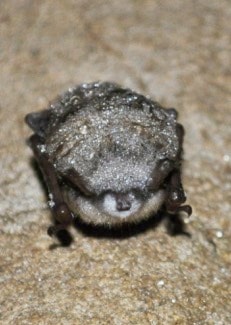Winter has been good for bats in B.C. with no incidents of White-Nose Syndrome (WNS) being reported in the province.
Skeena Community Bat Project, in collaboration with the Province of B.C., has been on the lookout for signs of WNS, a fungal disease harmless to humans but responsible for the deaths of millions of insect-eating bats in North America.
The disease was first reported in Washington State in March 2016. Since then, Community Bat Program (CBP) coordinators have been collecting reports of unusual winter bat activity and ensuring dead bats are sent to the Canadian Wildlife Health Centre lab for disease testing.
But with the arrival of spring, it also means an increased chance of detecting the disease, so the CBP is asking for help.
“Spring conditions mean increased bat activity — and an increased chance of detecting the disease. As bats begin to leave hibernacula and return to their summering grounds, our chances of seeing live and dead bats increases, and the Skeena Community Bat Project is continuing to ask for assistance,” stated a press release dated March 9.
The Community Bat Project is asking the public to report dead bats or any sightings of daytime bat activity to their local CBP as soon as possible at 1-855-922-2287, ext. 19 or skeena@bcbats.ca.
“Currently, there are no treatments for White Nose Syndrome. Mitigating other threats to bat populations and restoring bat habitat may provide bat populations with the resilience to rebound,” the release stated.
